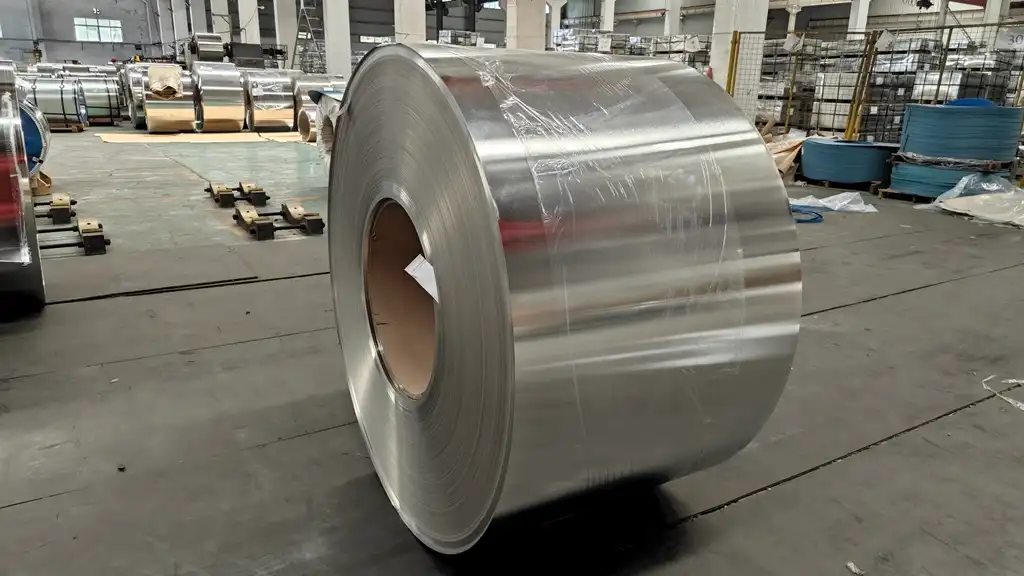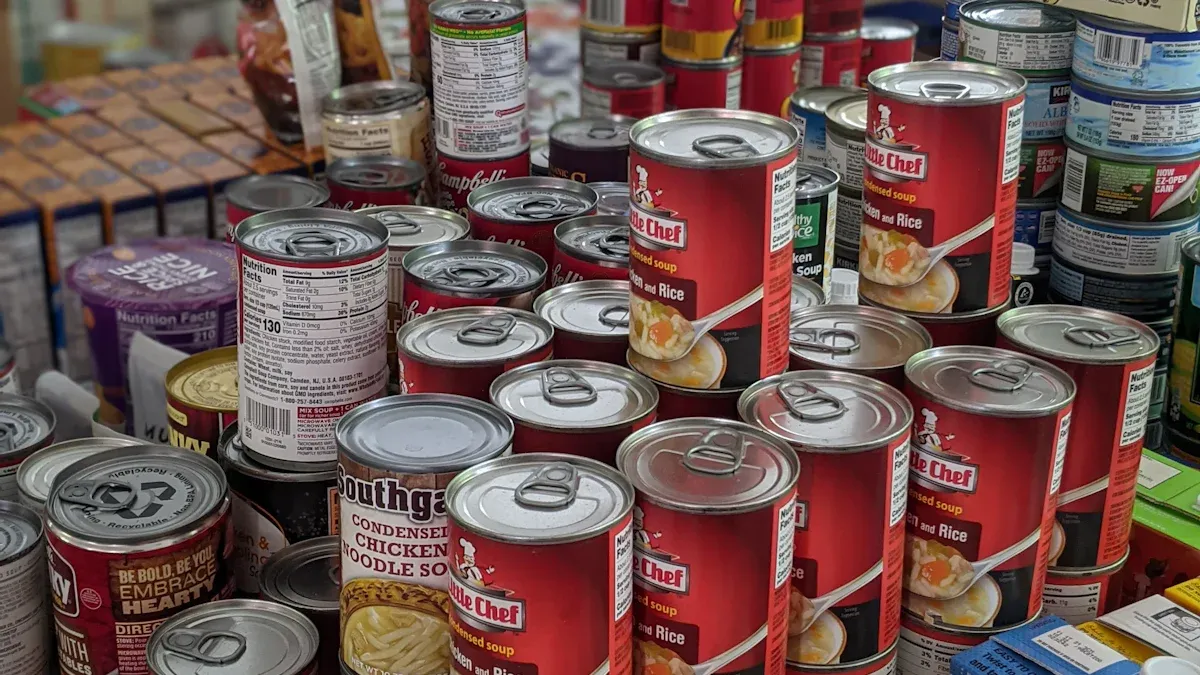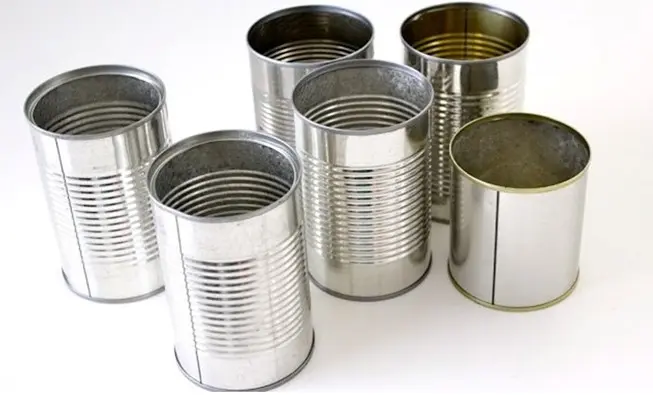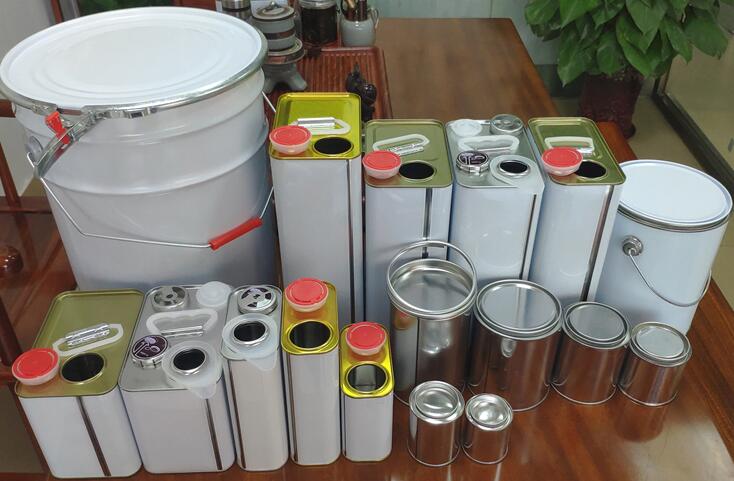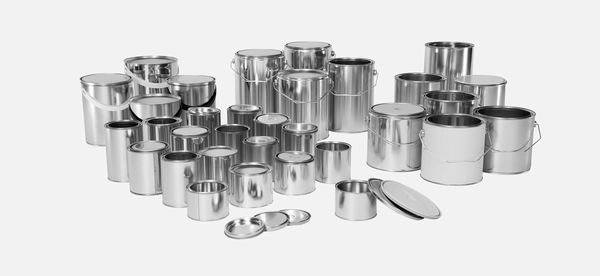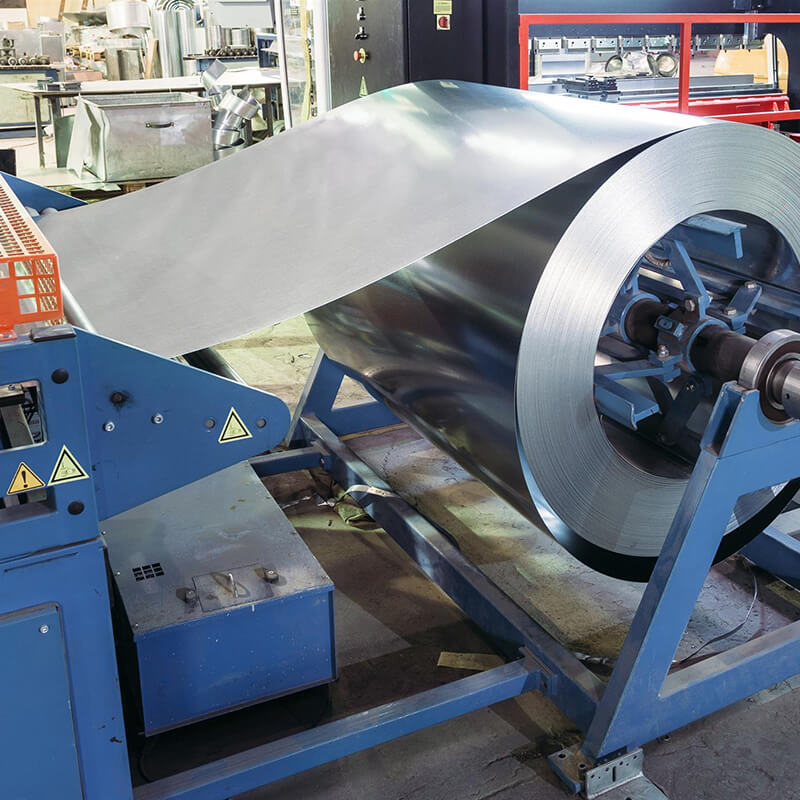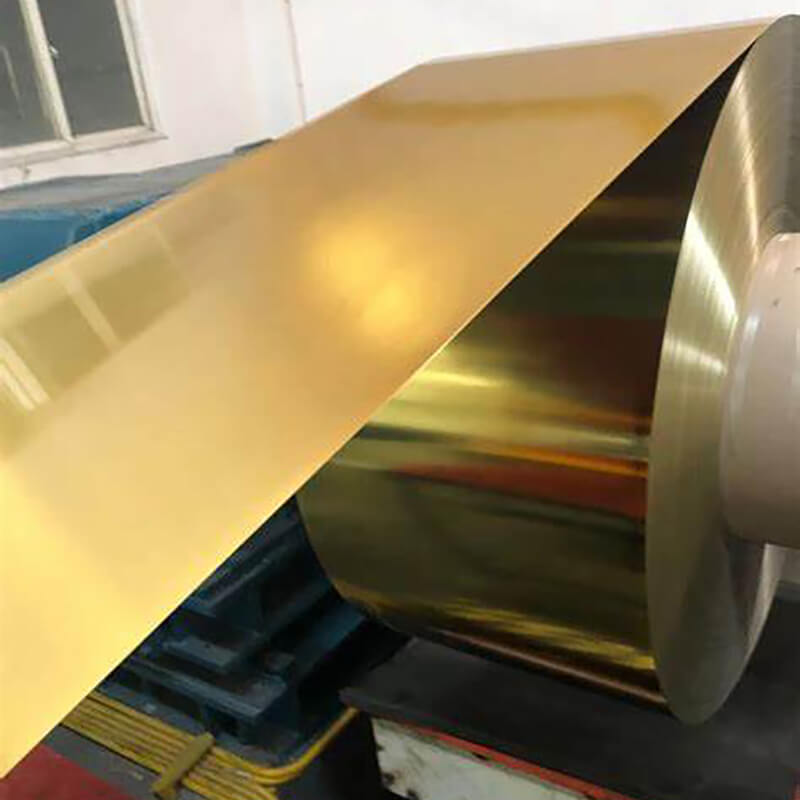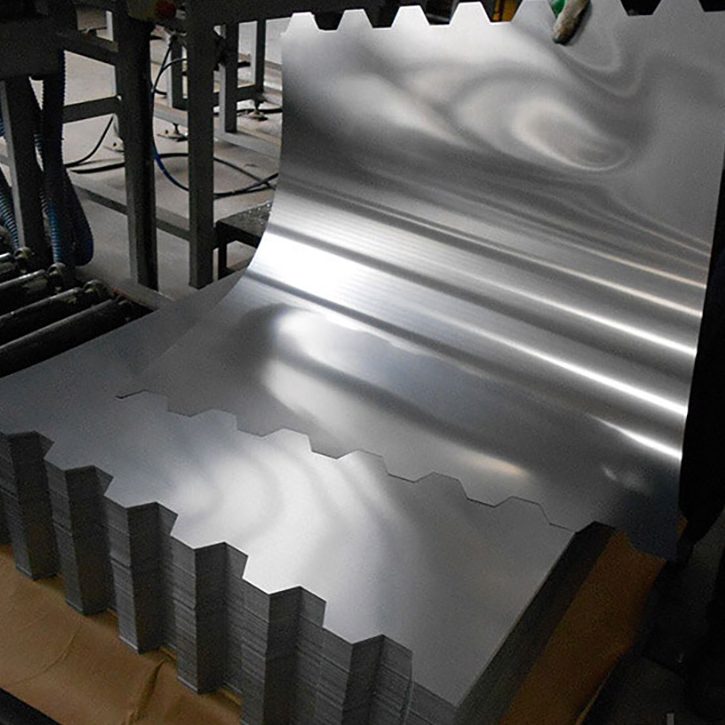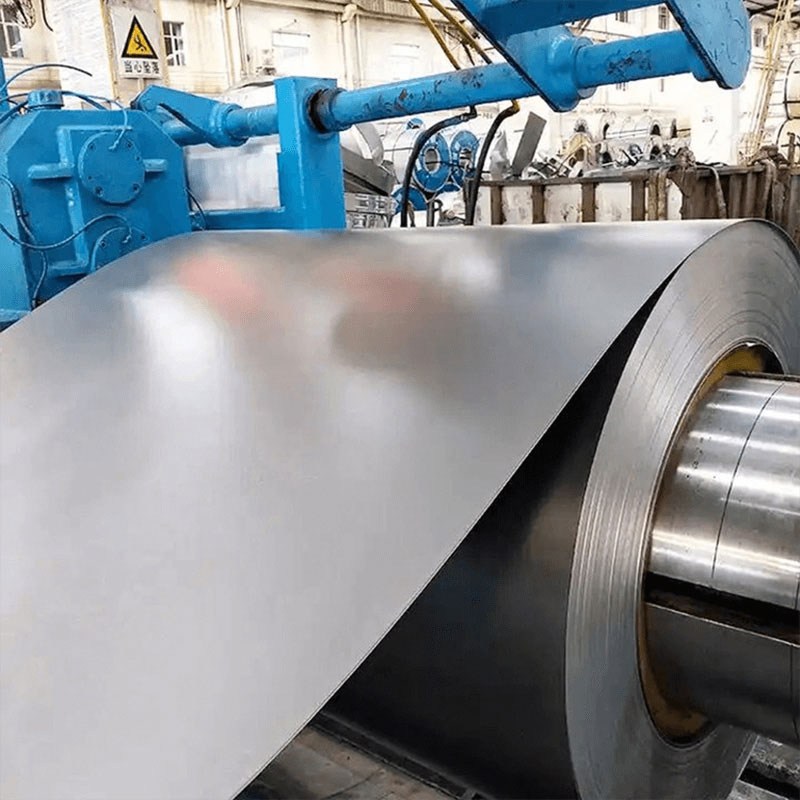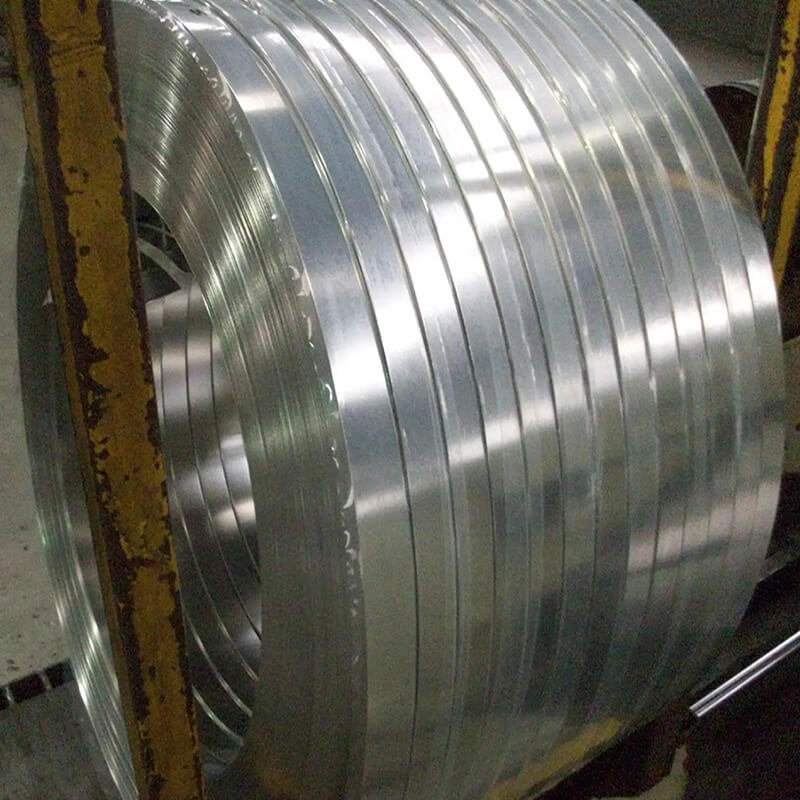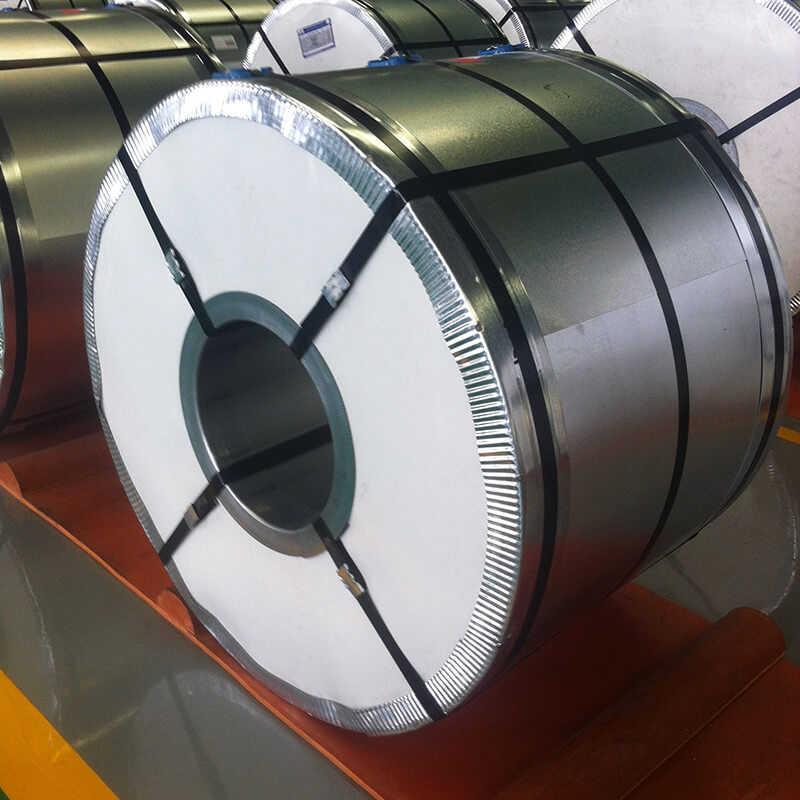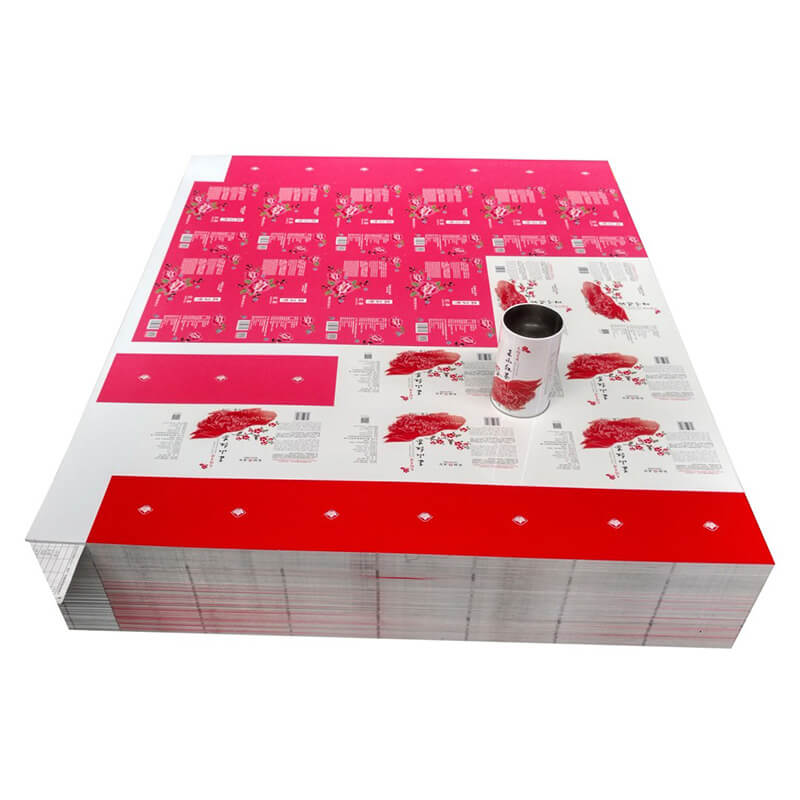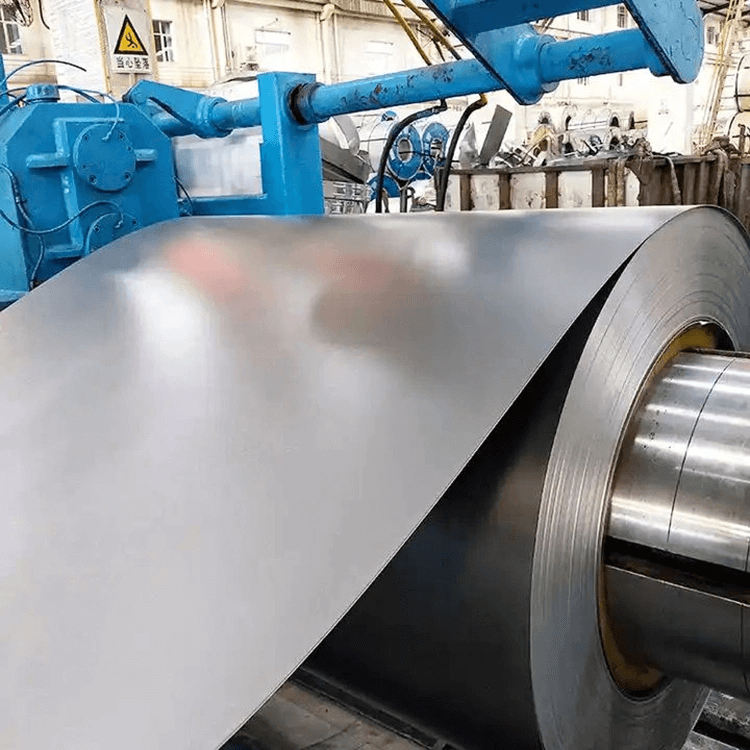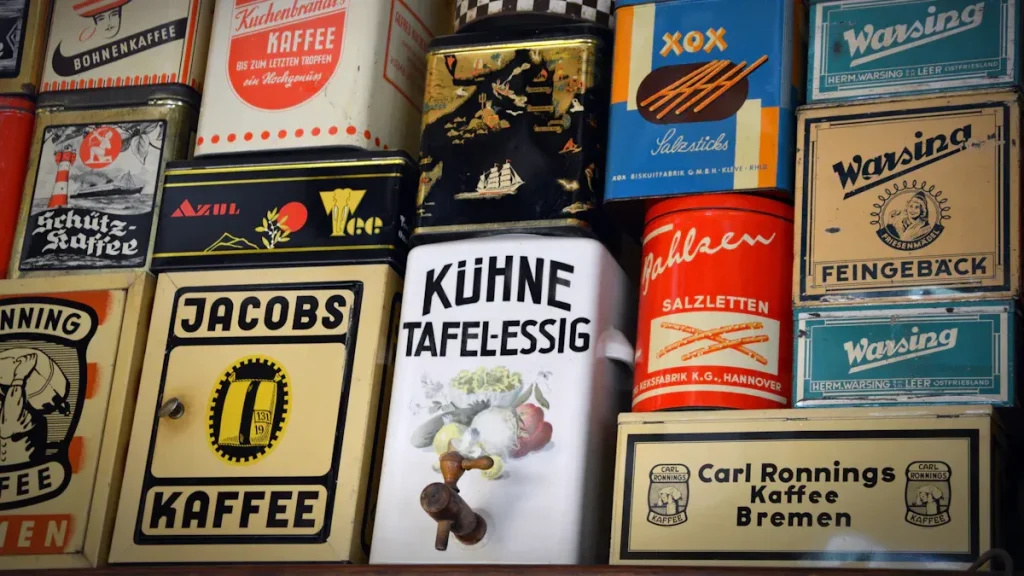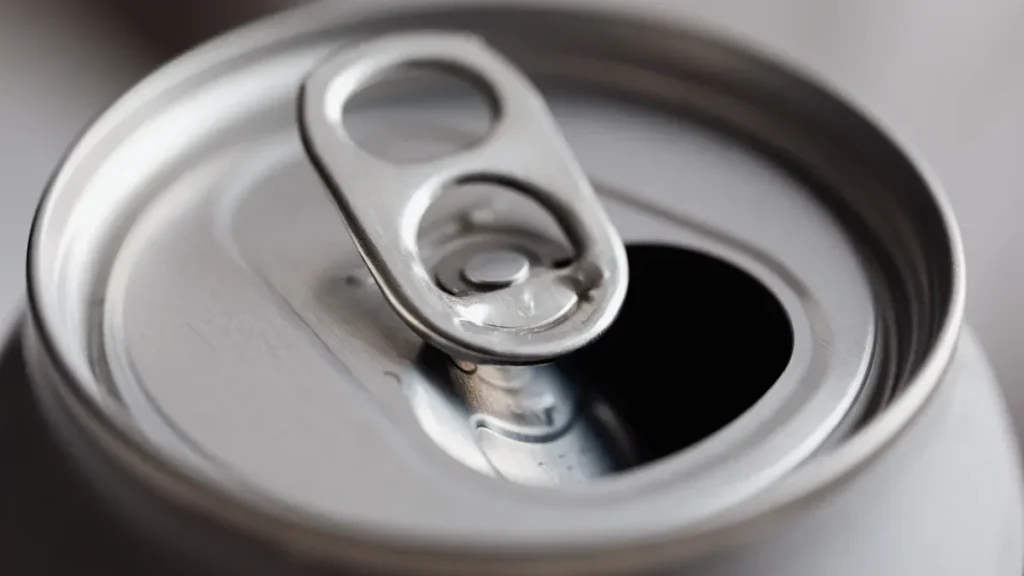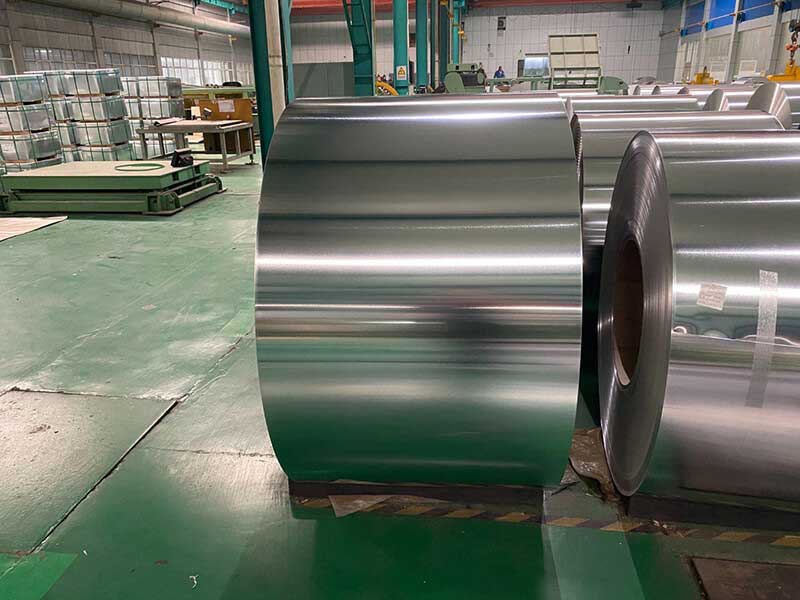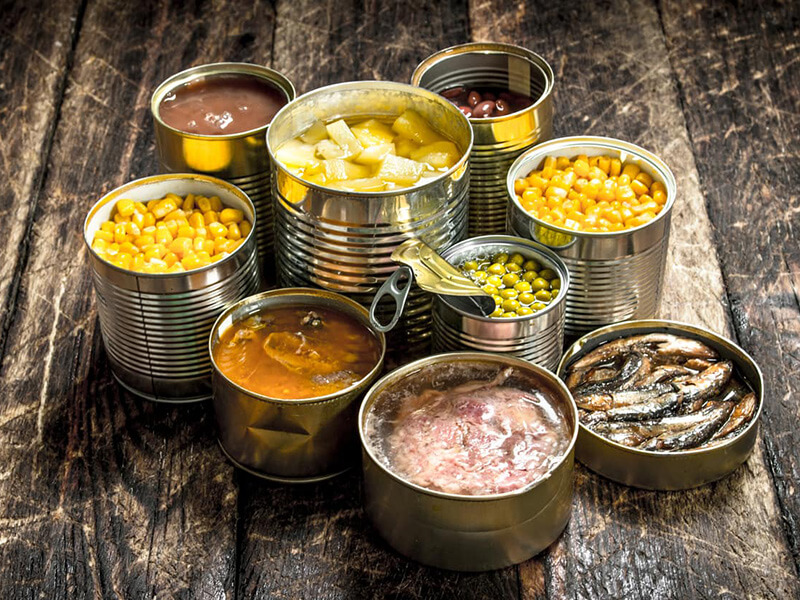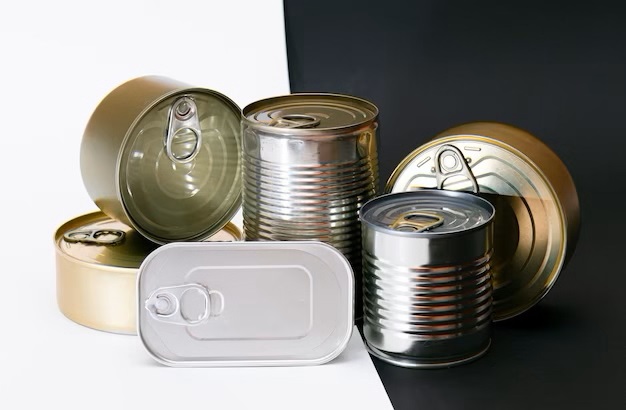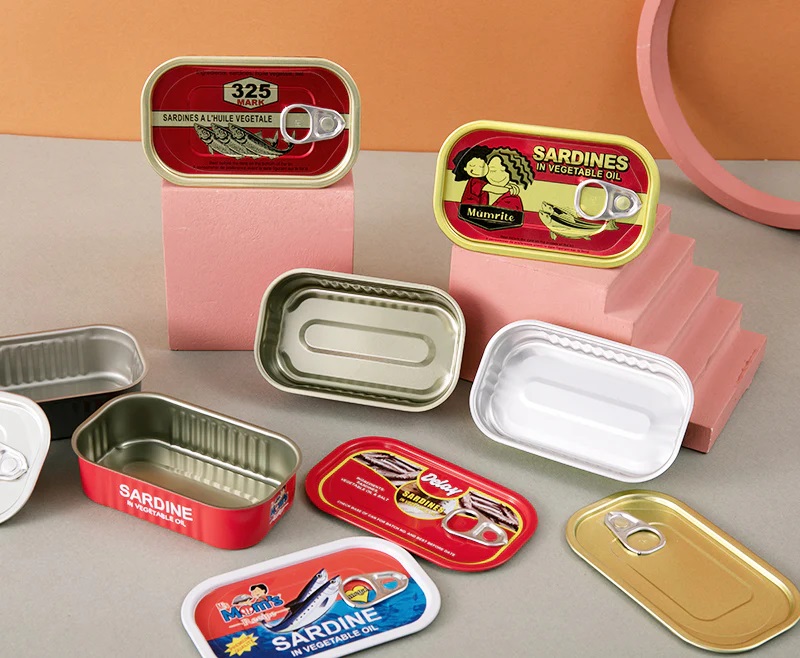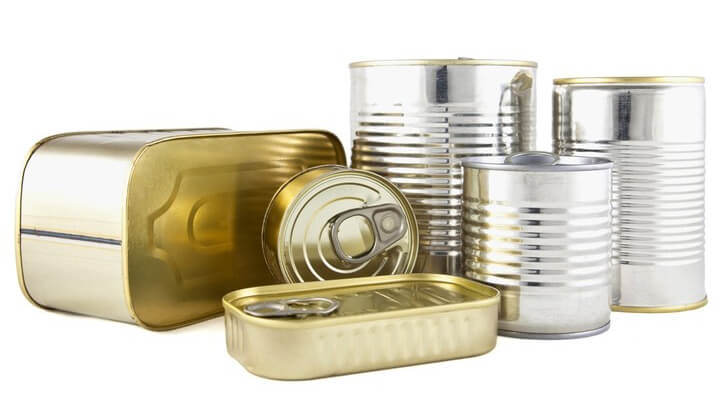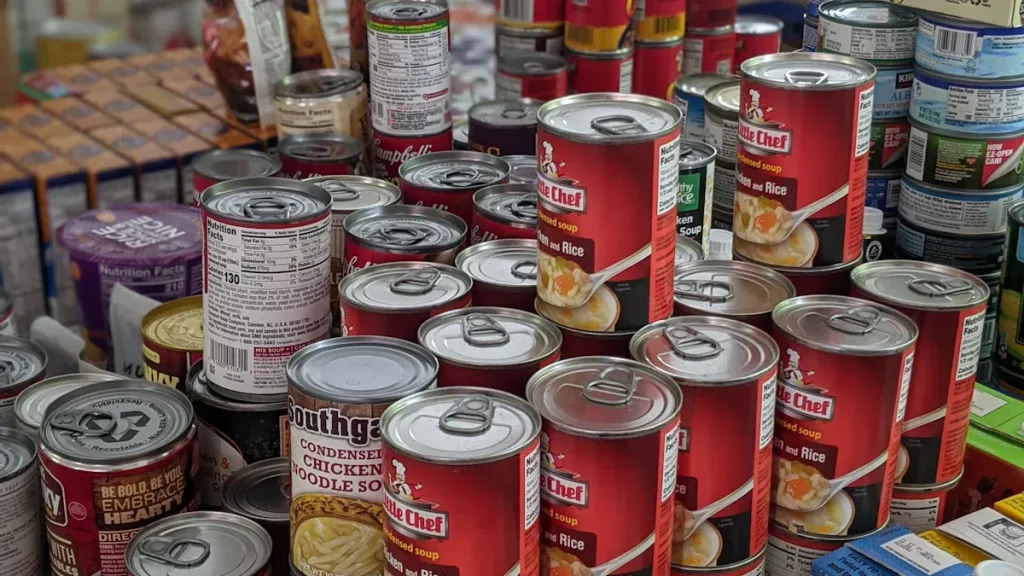Choosing the right tinplate pail cans for your project starts with matching the can’s type, size, and features to your needs. You want durable materials, user-friendly lids, and reliable storage. Take a look at some common challenges you might face:
| Challenge | Description |
|---|---|
| Material Quality | Durable, corrosion-resistant cans keep your products safe over time. |
| Weight Considerations | Lightweight cans save you money and make handling easier. |
| Ease of Use | Easy-to-open lids speed up your process and reduce frustration. |
Think about these factors when you make your choice.
Key Takeaways
- Choose the right type of tinplate pail can based on your needs: open head for easy access and tight head for secure storage.
- Consider the material quality; durable, corrosion-resistant cans protect your products and ensure longevity.
- Select the appropriate size and shape to fit your product and storage space, from small samples to large bulk containers.
- Match the closure system to your product type; use lever lock or screw caps for liquids and snap-on lids for dry goods.
- Look for cans that meet safety and compliance standards, such as FDA and UN certifications, to ensure safe storage.
- Explore customization options for branding, including size, shape, and printing, to make your product stand out.
- Prioritize sustainability by choosing recyclable cans and eco-friendly coatings to reduce environmental impact.
- Always compare suppliers for quality and pricing; bulk buying can lead to significant savings and better deals.
Tinplate Pail Cans Buying Guide
When you start looking for tinplate pail cans, you want to know what makes them stand out. These cans use steel coated with tin, which gives you a strong protective barrier. You get durability, corrosion resistance, and a safe way to store all kinds of products. If you need to buy metal tins for your project, this buying guide will help you understand the basics and make the right choice.
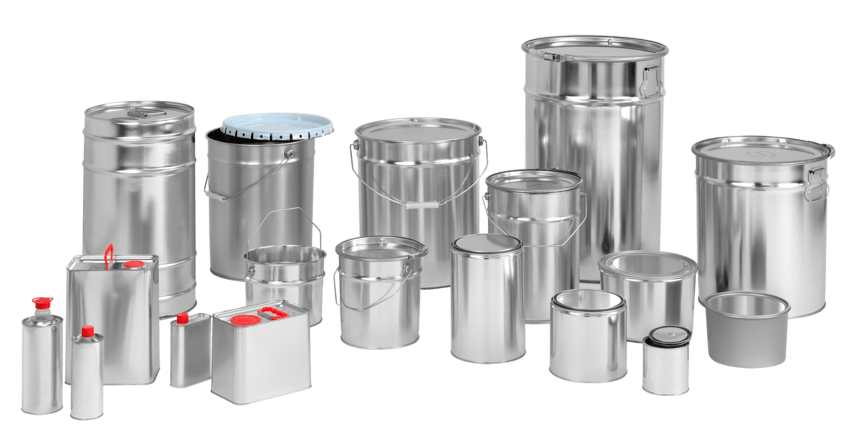
Types
You’ll find two main types of tinplate pail cans. Each type suits different needs, so you want to pick the one that matches your project.
Open Head
Open head tinplate pail cans have removable lids. You can fill and empty them easily. These cans work well for products that need frequent access, like paints or powders. The wide opening lets you pour or scoop without hassle. If you need paint storage containers for paint application, open head cans make the process smooth.
Tight Head
Tight head tinplate pail cans come with a fixed lid and a small opening. You use these for liquids or chemicals that need secure storage. The tight seal keeps your contents safe from leaks and evaporation. If you store flammable or toxic materials, tight head cans give you peace of mind.
Tip: Choose open head cans for easy access and tight head cans for maximum safety.
Applications
Tinplate pail cans serve many industries. You’ll see them everywhere, from food packaging to chemical storage. Here’s a quick look at where you might use them:
| Industry | Application |
|---|---|
| Food Packaging | Used for high-end products like chocolates, tea, and coffee. The cans keep your food fresh and safe. |
| Industrial Packaging | Perfect for storing heavy-duty goods that need tough, durable packaging. |
| Chemical Storage | Ideal for chemicals. The robust nature of tinplate containers protects against leaks and corrosion. |
Food
You want your food products to stay fresh and safe. Tinplate pail cans offer excellent corrosion resistance. They keep chocolates, tea, and coffee at their best. The tight seal preserves flavor and quality.
Paint
If you work with paint, you need reliable paint storage containers. Tinplate pails handle paint application well. They prevent leaks and keep your paint from drying out. The sturdy design means you can move and store them without worry.
Chemicals
Storing chemicals can be risky. Tinplate pail cans give you a strong, safe option. The tin coating resists corrosion, and the tight seal prevents evaporation and leaks. You can trust these cans for flammable or toxic chemicals.
Why Tinplate Is Cost-Effective
When you compare tinplate pail cans to other options, you see real advantages. Check out this table to see how tinplate stacks up against plastic and aluminum:
| Property | Tinplate | Plastic | Aluminum |
|---|---|---|---|
| Strength and Durability | High strength, suitable for heavy products | Lower strength, may deform under pressure | Good strength, but can be more expensive |
| Corrosion Resistance | Excellent due to tin coating | Varies, generally resistant | Good, but can corrode under certain conditions |
| Formability | Highly formable for various designs | Limited formability | Good formability, but more costly |
| Printability | Excellent for high-quality graphics | Limited print options | Good, but can be more expensive |
You get high strength and durability with tinplate containers. The tin coating protects against rust. You can shape these cans in many ways and print eye-catching designs. If you want to buy metal tins that look good and last, tinplate is a smart choice.
Why Tinplate Is Suitable for Flammable Products
If you need to store flammable products, tinplate pail cans offer key benefits:
- Tinplate resists corrosion, which keeps flammable products like paints and solvents safe.
- The strong barrier prevents evaporation and leakage, so your solvents stay contained.
- High strength and sealing properties minimize risks when you handle flammable or toxic chemicals.
You get peace of mind knowing your products are safe during storage and transport.
Note: Always check the buying guide for safety features when you choose tinplate pail cans for hazardous materials.
This buying guide gives you the basics you need to choose the right tinplate pails for your project. Whether you need food packaging, paint storage containers, or chemical safety, tinplate pail cans deliver reliability and value.
Material and Coating
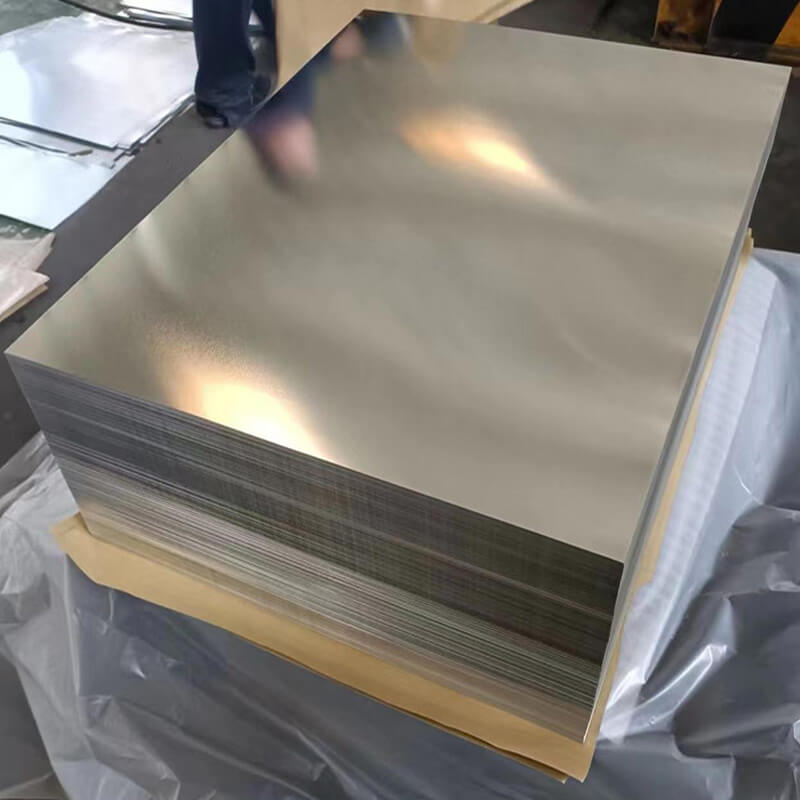
When you choose tinplate pail cans, you want to know what makes them strong, lightweight, and reliable. The right material and coating keep your products safe and fresh. Let’s break down what matters most.
Steel Quality
You get strength and durability from the steel core in every 3-piece tinplate can. Manufacturers coat thin steel sheets with tin on both sides. This process gives you a can that stands up to bumps and drops. The steel core also blocks air and light, so your contents stay protected.
Steel comes in different temper levels. Each level affects how tough and flexible your can will be. Here’s a quick look at the main temper grades:
| Temper Level | Hardness | Flexibility | Yield Strength | Tensile Strength |
|---|---|---|---|---|
| T1 | Soft | High | Low | Low |
| T2 | Medium | Medium | Medium | Medium |
| T3 | Hard | Low | High | High |
| T4 | Harder | Very Low | Very High | Very High |
| T5 | Hardest | Least | Maximum | Maximum |
If you need a can for heavy-duty storage, pick a higher temper level. For products that need a little give, go with a softer grade. The three-piece construction of a 3-piece tinplate can adds extra rigidity, so your can holds up under pressure.
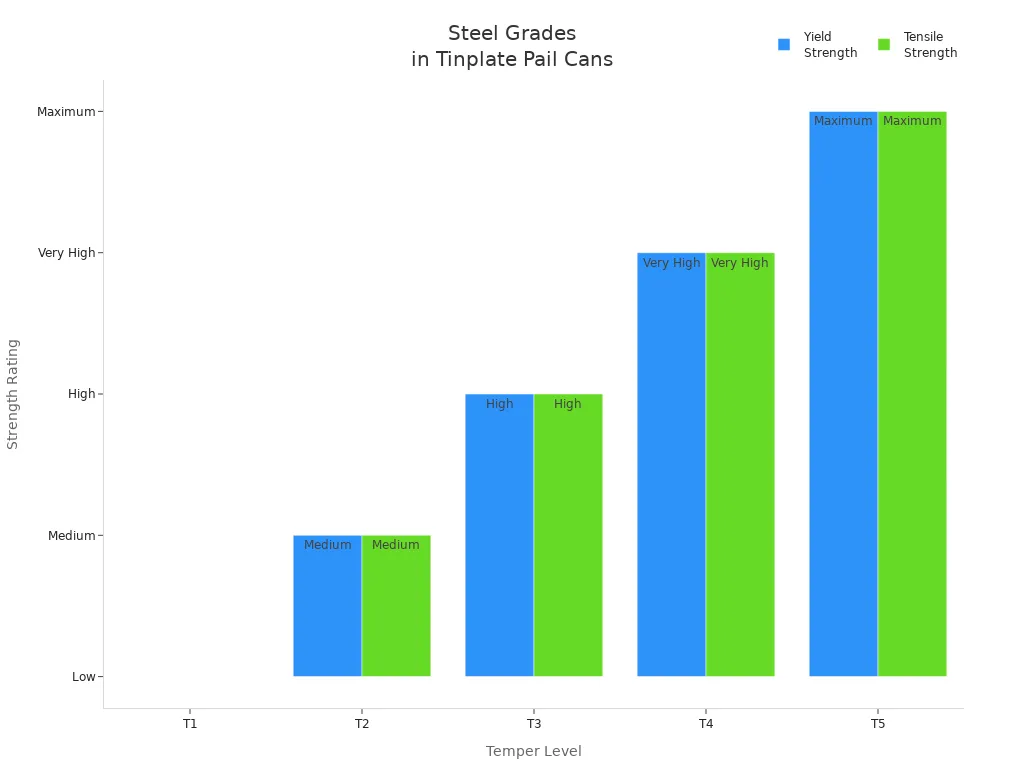
Tin Coating
The tin coating is what keeps your can from rusting. You want a thick, even layer of tin for the best protection. Here’s why the thickness matters:
- A thicker tin layer gives you better corrosion resistance.
- The tin stops acids and alkalis from touching the steel, which is key for foods and drinks.
- If you pack citrus juice or other acidic products, the tin layer keeps the can safe and your food fresh.
You get a longer shelf life and less risk of spoilage. The tin coating also makes your 3-piece tinplate can look shiny and clean.
Tip: Always check the tin thickness if you need extra protection for your products.
Protective Linings
Sometimes, you need more than just steel and tin. That’s where protective linings come in. The appropriate lining and coating help you store chemicals, food, or water-based products without worry. You can choose from several types:
| Type of Lining | Suitable For |
|---|---|
| Coating (painted/pigmented) | Water-based products or corrosive chemicals |
| Plain finish | Products containing solvents |
| Phenolic | General protection for various contents |
| Epoxy-phenolic | Enhanced protection against corrosion |
| Rust-inhibitor | Protection for both the product and the can |
You might see phenolic, epoxy-phenolic, or rust-inhibitor linings in a 3-piece tinplate can. These linings keep your contents safe and extend the life of your can. If you need to store harsh chemicals or sensitive foods, pick a can with the right lining.
Note: Custom linings are available for special needs. Ask your supplier about options for your project.
Choosing the right material and coating means your tinplate pail cans will last longer and protect your products better. You get peace of mind and better results for every project.
Right Size and Shape
Choosing the right size and shape for your tinplate pail cans can make your project much easier. You want a can that fits your product, saves space, and keeps everything safe. Let’s break down your options so you can pick the best one.
Common Sizes
Tinplate pail cans come in a wide range of sizes. You’ll see small cans for samples and large ones for bulk storage. Here are some of the most popular sizes you might find:
- 8 oz
- 16 oz
- 32 oz
- 1 gallon
- 2.5 liters
- 3 liters
- 4 liters
- 5 liters
- 6 liters
- 10 liters
- 12.5 liters
- 15 liters
- 18 liters
- 20 liters
- 21 liters
- 23 liters
- 25 liters
- 30 liters
- 34 liters
- 35 liters
- 45 liters
- 55 liters
- 60 liters
8 oz
If you need to store small samples or specialty products, 8 oz cans work well. You can use them for paint touch-ups, food samples, or small chemical portions. They’re easy to handle and don’t take up much space.
16 oz
For slightly larger needs, 16 oz cans give you more room. You might use these for craft supplies, adhesives, or small batches of food. They’re still compact but hold twice as much as the 8 oz size.
32 oz
When you need a middle ground, 32 oz cans offer a good balance. These cans fit well for household paints, cleaning products, or bulk spices. You get enough capacity without making the can too heavy.
Gallon
The gallon size stands out as a favorite for many projects. You’ll see gallon cans everywhere—paint stores, food processing plants, and chemical suppliers. One-gallon tin cans give you plenty of space for liquids, powders, or granules. You can store paint, oils, syrups, or cleaning agents. The gallon size is easy to carry, stack, and pour from, making it a top pick for both home and industrial use.
Tip: If you need to store or transport larger quantities, look for cans in the 5-gallon, 10-gallon, or even 20-gallon range. These sizes are perfect for commercial and industrial applications.
Shape Options
You also have choices when it comes to the shape of your tinplate pail cans. The shape can affect how you store, stack, and use your cans.
Round
Round cans are the classic choice. You’ll find them in most paint stores and food packaging lines. They’re easy to seal and pour from. The round shape helps with even mixing and makes cleaning simple.
Square
Square cans give you a space-saving option. You can stack them tightly on shelves or pallets. If you need to maximize storage or shipping space, square cans might be your best bet. They also look modern and can stand out on store shelves.
Choosing Size
So, how do you pick the right size and shape? Start by thinking about what you need to store. If you’re working with small samples, go for 8 oz or 16 oz cans. For most household or small business needs, 32 oz or one-gallon tin cans work great. If you’re handling large volumes, step up to 5-gallon or even 20-gallon cans.
Ask yourself these questions:
- How much product do you need to store or ship?
- Will you need to pour, scoop, or stack the cans?
- Do you have limited shelf or storage space?
- Are you looking for a can that’s easy to carry?
Matching the right size and shape to your project helps you save time, reduce waste, and keep your products safe. Whether you need a single gallon or a 55-gallon drum, you’ll find a tinplate pail can that fits your needs.
Closure Systems
Choosing the right closure system for your tinplate pail cans can make your project safer and easier. The lid you pick affects how you open, close, and protect your products. Let’s look at the main lid types and what they mean for you.
Lid Types
You have several lid options. Each one works best for different uses. Here’s what you need to know:
Lever Lock
Lever lock lids give you a strong, secure seal. You use a metal lever to lock the lid in place. This type works well when you need to keep liquids or chemicals safe. You can open and close the can many times without losing the tight fit. Lever lock lids also help prevent spills during transport.
Screw Cap
Screw cap lids twist on and off. You get easy access to your product. These lids work best for products you use often, like paints or adhesives. The screw cap keeps air out and helps your product last longer. You can open and close the can with just your hands—no tools needed.
Snap-On
Snap-on lids pop into place with a little pressure. You can open and close them quickly. These lids are great for dry goods or products you need to access fast. Snap-on lids may not seal as tightly as lever lock or screw cap lids, so use them for less risky contents.
Tip: Always match your lid type to your product. Liquids and chemicals need a tighter seal than dry goods.
Here’s a quick look at how different lid types affect usability and safety:
| Lid Type | Usability/Safety Issues |
|---|---|
| Membrane top | Poor seal, short/missing/torn pull tab |
| Open top with plastic overcap | Missing/warped plastic overcap, hard to reapply |
| Outside tinplate or coating | Missing/incomplete, blistered/flaked, scratched, or cracked |
| Leaker | Can affect usability and safety |
| Crushed or torn area | Can affect usability and safety |
Seal Integrity
A good seal keeps your product safe from leaks, spills, and air. Lever lock lids and screw caps offer the best seal. They use rubber gaskets or tight threads to keep everything inside. If you store hazardous materials, you need a lid that won’t let anything escape. Snap-on lids work for less risky products, but always check for a snug fit.
Safety Features
Safety matters most when you handle chemicals or flammable products. Tinplate pail cans come with features that help you stay safe:
| Feature | Description |
|---|---|
| Robust Construction | Strong tinplate resists corrosion and leakage. |
| Sealing Mechanism | Secure plug and fitted cover keep contents enclosed. |
| Specialized Design | Hazmat bottom adds extra protection for hazardous materials. |
| Portability | Metal bail makes carrying and moving cans easier. |
| Compliance | Meets strict industry standards for hazardous storage. |
| Lid Sealing | Rubber gasket on the lid prevents leaks and spills. |
| Pressure Resistance | Can withstand high pressure, perfect for chemicals. |
| Temperature Resistance | Handles high heat and tough environments. |
You want a closure system that matches your needs. If you store dangerous chemicals, look for cans with rubber gaskets, strong seals, and pressure resistance. For food or paint, a screw cap or lever lock lid may be enough.
Note: Always inspect your lids for damage before use. A good closure system keeps your products safe and your project on track.
Compliance and Safety
When you choose tinplate pail cans, you want to make sure your packaging meets all the right rules. Safety and compliance matter for every project, whether you work with food, chemicals, or industrial goods. Let’s look at what you need to know.
Standards
You need to check that your cans meet international standards. These standards help you keep your products safe and make sure you follow the law. Here’s a table that shows some important standards for tinplate pail cans:
| Standard/Certification | Description |
|---|---|
| FDA | Compliance with FDA regulations for food safety |
| UN 1A2/Y1.6 | Certified for hazardous materials packaging |
| ISO 15378 | Primary packaging standards for medicinal products |
| ASTM E96-16 | Validated moisture barrier standards |
| EN 643:2013 | Certification for full recyclability |
| JIS G3303:2008 | Japanese Industrial Standard for tinplate |
| ASTM A623M | Standard specification for tinplate cans |
| ASTM A624M | Standard specification for tinplate containers |
| ASTM A625M | Standard specification for tinplate pails |
| ASTM A626M | Standard specification for tinplate packaging |
| EN10202:2001 | European standard for tinplate products |
You want to look for cans that match these specifications. If you need un certified packaging for hazardous goods, check for the UN 1A2/Y1.6 mark. This shows your cans are safe for chemicals and dangerous materials.
Tip: Always ask your supplier about the standards their cans meet. This helps you avoid problems later.
Certifications
Certifications prove your cans are safe and high quality. You might see different certifications depending on your industry. Here are some of the most recognized ones:
- UN Certification for dangerous goods
- ISO Certification (ISO 9000, ISO 9001:2008, ISO 9001:2015)
- FDA Registration
If you work with food, look for FDA registration. For chemicals, UN certification is key. ISO certifications show your cans meet strict quality rules. Some cans also get approved for packaging groups II and III, which means they handle more types of hazardous goods.
| Certification Type | Description |
|---|---|
| UN Certification | For dangerous goods packaging, ensuring compliance with safety standards. |
| ISO Certification | Ensures quality management and safety standards in manufacturing. |
| FDA Registration | Validates that the packaging meets safety standards for food products. |
You want to see these certifications on your cans. They give you peace of mind and help you pass inspections.
Labeling
Labeling matters for safety and legal reasons. You need clear labels that show what’s inside each can. Good labels help you avoid mistakes and keep everyone safe. Here’s what you should include:
- Product name and description
- Hazard warnings (if needed)
- Manufacturer details
- Batch number or date code
- Storage instructions
If you ship chemicals or hazardous goods, you must use special labels. These labels warn handlers about risks and show that your cans meet safety rules. For food products, labels must follow FDA guidelines.
Note: Always double-check your labels before shipping. Clear labeling keeps your project safe and helps you follow the law.
Customization Guidance
Purpose
When you start a new project, you want your tinplate pail cans to fit your exact needs. Customization gives you control over how your cans look and work. You can choose the right size, shape, and material for your product. This guidance helps you match your packaging to your brand and your customers’ expectations.
Here’s a quick table to show your main options:
| Feature | Details |
|---|---|
| Sizes | You can pick from small 1-liter pails to large 20-liter pails. |
| Shapes | Most cans are round, but you can also get square or rectangular pails. |
| Material | High-quality steel gives you strength and corrosion resistance. |
| Coating | Choose from UV protection or weather-resistant coatings for extra durability. |
You get to decide what works best for your product. If you need a strong can for outdoor use, pick a weather-resistant coating. If you want to save space, try a square shape. This level of expert guidance helps you make smart choices for your business.
Printing
Printing turns your tinplate pail cans into powerful branding tools. You can add your logo, product name, or colorful designs right on the can. The printing process for tinplate is a bit different from regular printing. The ink must stick well to the tinplate and stay strong even after the can is cut, bent, or stretched.
Here’s how the printing process usually works:
- The tinplate gets a whitening treatment to make colors pop.
- Offset printing applies your design using special inks that bond to the metal.
- The can goes through a drying room to set the ink.
- The finished can is ready for coating and use.
| Printing Technique | Description |
|---|---|
| Offset Printing | Uses oil and water to create sharp images on the smooth tinplate surface. |
| Ink Requirements | Inks must have strong adhesion and durability for the final product. |
| Pre-Printing Process | Whitening the tinplate boosts color brightness and quality. |
Printing makes your cans stand out on the shelf. You can use bold colors, clear text, and eye-catching graphics to attract customers.
Labeling
Custom labeling gives your product a unique identity. You can show off your brand and make your cans easy to spot. Labels also help you meet legal rules by showing important information like product names, warnings, and instructions.
- Custom labels help your product stand out in stores.
- You can include all the details your customers need.
- Labels help you follow safety and legal requirements.
Tip: Always double-check your labels for accuracy. Good labeling keeps your customers safe and builds trust in your brand.
Design
When you think about tinplate pail cans, design plays a huge role in how your product stands out and how easy it is for people to use. You want your packaging to look great, work well, and make a strong impression. Let’s explore the design features you can choose to boost your project’s success.
Here’s a quick look at some popular design features for tinplate pail cans:
| Design Feature | Description |
|---|---|
| Size and Shape | Different sizes and shapes help your product fit shelves and attract attention. |
| Labeling and Printing | High-resolution graphics and bright colors make your cans pop. |
| Branding and Custom Graphics | Custom logos and designs set your product apart from the competition. |
| Special Finishes | Matte, glossy, or metallic coatings add style and protect the can. |
| Lightweighting | Lighter cans save on shipping costs but stay strong. |
| Easy-Open Features | Pull-tabs or twist-off lids make opening cans simple for everyone. |
| Interactive Packaging | QR codes or AR tech give customers more info and a fun experience. |
| Smart Packaging | Sensors can track freshness and share updates in real time. |
You get to pick the features that match your brand and your customer’s needs. If you want your product to catch someone’s eye on the shelf, go for bold graphics and custom finishes. Maybe you need cans that are easy to open for older adults or kids. In that case, choose easy-open lids or pull-tabs.
Tip: Think about your target audience. Do they care more about style, convenience, or tech? Match your design to what matters most to them.
Special finishes like matte or metallic coatings can make your cans look premium. These finishes also protect the surface from scratches and moisture. Lightweight cans help you save money on shipping and make handling easier for your team.
Want to add a modern touch? Interactive packaging lets you connect with customers using QR codes or augmented reality. People scan the code and get recipes, safety tips, or even videos about your product. Smart packaging goes a step further. Sensors inside the can can tell you if the product is still fresh or needs to be replaced.
Here are some questions to help you choose the right design:
- Do you want your cans to stand out on store shelves?
- Will your customers need easy-open features?
- Are you interested in adding tech like QR codes or freshness sensors?
- What kind of finish fits your brand—matte, glossy, or metallic?
Design isn’t just about looks. It’s about making your product easy to use and memorable. When you pick the right design features, you create a better experience for your customers and build a stronger brand. So, take some time to think about what matters most for your project. Your tinplate pail cans can do more than just hold your product—they can help your business grow.
Sustainability
You probably hear a lot about sustainability these days. When you choose tinplate pail cans, you make a smart move for the planet. These cans offer real benefits for the environment and your business. Let’s look at how you can boost sustainability in your next project.
Recyclability
Tinplate pail cans stand out because you can recycle them almost everywhere. Steel and tin are both valuable materials. Most recycling centers accept these cans, so you keep waste out of landfills. When you recycle, you help save energy and cut down on pollution. The recycling process for tinplate uses less energy than making new steel from scratch. You also reduce greenhouse gas emissions. If you want to show your customers that you care about sustainability, highlight the recyclability of your packaging.
Tip: Rinse out your cans before recycling. Clean cans get processed faster and more efficiently.
Eco-Friendly Coatings
You might wonder if the coatings on tinplate cans are safe for the environment. Today, you have many eco-friendly options that support sustainability. These coatings protect your products and the planet at the same time. Here’s a quick look at some popular choices:
| Coating Type | Benefits |
|---|---|
| BPA-non-intent (BPA-NI) | Meets food safety rules and addresses health concerns. |
| Non-BPA coatings | Replaces old epoxy systems and matches consumer preferences. |
| Water-based coatings | Cuts down on VOC emissions for cleaner air. |
| UV-curable coatings | Uses less energy and cures faster, plus resists scratches. |
| Electron beam (EB) curable | Boosts efficiency and lowers emissions. |
| High-solids coatings | Needs fewer layers, so you use less solvent and get strong protection. |
| Flexible coatings | Handles tough can-making without cracking. |
| Barrier coatings | Blocks oxygen, moisture, and light to keep products fresh. |
| Smart coating technologies | Shows temperature changes or freshness for added value. |
| Bio-based and biodegradable | Comes from renewable sources, reducing reliance on oil. |
You can pick coatings that match your product and your sustainability goals. Water-based and bio-based coatings are great if you want to lower your carbon footprint. Smart coatings even let you track freshness, which can help reduce food waste.
Reuse
Don’t toss your tinplate pail cans after one use. You can reuse them in so many ways. These cans are strong and easy to clean. Use them for storage, organizing tools, or even as planters. Some people turn them into craft projects or use them for DIY home décor. By reusing your cans, you stretch their life and cut down on waste. This simple step supports sustainability and saves you money.
Callout: Every time you reuse or recycle a tinplate pail can, you make a positive impact on the environment.
When you think about sustainability considerations, tinplate pail cans check all the boxes. They are recyclable, support eco-friendly coatings, and offer lots of ways to reuse. You help the planet and show your customers that you care about making responsible choices.
Cost and Supplier
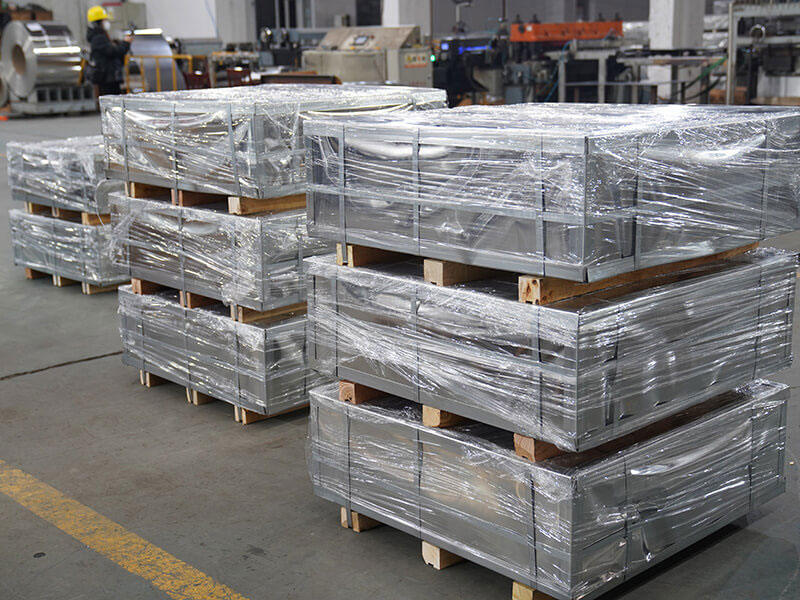
When you plan your project, cost and supplier choice can make a big difference. You want to get the best value without giving up quality. Let’s break down what you need to know.
Budget
Setting your budget helps you avoid surprises. Tinplate pail cans come in many price ranges. You can find basic storage tins for as little as ₹15 per piece (about $0.18 USD). If you want custom-printed, food-grade containers, the price can go over $1.50 per unit. Bulk orders often bring the price down by 30-50%.
Here’s a quick look at how costs can change:
| Type of Tinplate Pail Can | Approximate Price per Unit |
|---|---|
| Basic storage tin | $0.18 |
| Custom-printed food-grade | $1.50+ |
| Bulk order discount | 30-50% off per unit |
Tip: Always ask your supplier for a detailed quote. This helps you compare options and avoid hidden fees.
Supplier Choice
Choosing the right supplier is just as important as picking the right can. You want a partner who delivers quality every time. Here’s what you should check before you buy:
- Look at the appearance of the pails. Make sure there are no dents or defects.
- Ask about the material used. High-quality steel and coatings last longer.
- Test the sealing. A good seal keeps your products safe.
- Check the weight and thickness. Heavier cans often mean better durability.
- Buy from reputable manufacturers. They stand behind their products.
- Match the material, size, and quality to your actual needs.
A reliable supplier will answer your questions and help you find the best packaging solutions for your project.
Bulk Buying
Buying in bulk can save you a lot of money. Suppliers usually offer lower prices per unit when you order more. You might also get extra perks like free shipping or special incentives. Here’s what you can expect:
- Lower price per can when you buy more.
- Discounts for large orders.
- Free shipping or other bonuses.
Callout: If you have a big project or need regular supplies, bulk buying is a smart move. You get better prices and fewer headaches.
Take time to compare suppliers and ask about bulk deals. This way, you get the most value for your money and keep your project on track.
You’ve learned how to pick tinplate pail cans that match your project. Focus on your product’s needs, check the size, material, and closure. Use this quick checklist:
- Identify your application
- Choose the right size and shape
- Check for safety features
- Compare suppliers
If you feel unsure, reach out to a supplier or expert. They can help you make the best choice.
FAQ
What makes tinplate pail cans different from regular metal cans?
Tinplate pail cans use steel coated with tin. This layer gives you extra protection against rust and corrosion. You get a stronger, safer container for food, chemicals, or paint.
Can I recycle tinplate pail cans?
Yes, you can recycle tinplate pail cans at most recycling centers. Just rinse them out first. Recycling helps you save energy and keeps waste out of landfills.
How do I know which size tinplate pail can I need?
Think about how much product you want to store or ship. Check the volume in ounces, liters, or gallons. If you’re unsure, ask your supplier for a size chart.
Are tinplate pail cans safe for food storage?
You can use tinplate pail cans for food if they meet FDA standards. Look for cans with food-safe linings and coatings. Always check for certifications before you buy.
What closure system should I choose for liquids?
Pick lever lock or screw cap lids for liquids. These lids seal tightly and prevent leaks. Snap-on lids work best for dry goods or products you access often.
Can I customize the design and printing on my tinplate pail cans?
You can add your logo, colors, and graphics with offset printing. Custom designs help your product stand out. Ask your supplier about printing options and minimum order quantities.
How do I check if my tinplate pail cans meet safety standards?
Look for certifications like UN, ISO, or FDA on the packaging or product description. You can also ask your supplier for documentation. Certified cans keep your project safe and compliant.
What should I do if my tinplate pail can arrives damaged?
Contact your supplier right away. Take photos of the damage. Most suppliers will replace defective cans or offer a refund. Always inspect your shipment before use.

